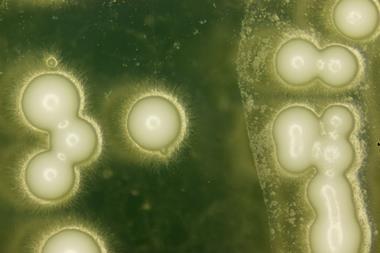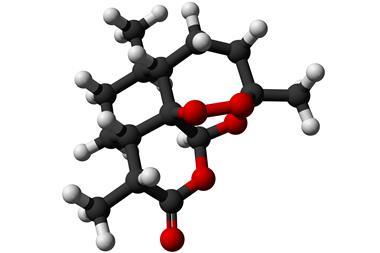High yields of artemisinin precursors from yeast mean semi-synthetics could help smooth out supply of the antimalarial
A natural biochemical pathway that produces the antimalarial drug artemisinin in the sweet wormwood plant has been fully reconstructed in yeast. The engineered yeast cells churn out high concentrations of a precursor that can be converted in a few steps into the first-line malaria drug. According to the team behind the advance, their semi-synthetic route should help smooth out seasonal variations in supply.
Semi-synthetic artemisinin has been in the pipeline since 2006, when Jay Keasling’s group at the Lawrence Berkeley National Laboratory in California, US, reported rewriting the genome of ordinary brewer’s yeast to encourage it to make artemisinic acid.1 But piecing together a practical route for making the drug precursor in yeast and then transforming it into the finished product has proved tricky. It has remained cheaper and more straightforward to extract the drug from its natural source.

The new study2, led by researchers at US biotech company Amyris in Emeryville, California, describes how the team solved an annoying problem with their yeast-based production plan – genes for two particular biosynthetic enzymes were making the yeast ill. ‘The yeast became very sick when these genes were expressed so we had to figure out why,’ says Chris Paddon, principal scientist at Amyris. ‘Another gene that we discovered led to healthy, happy yeast but they didn’t produce a lot of artemisinic acid.’
The breakthrough came with the discovery of two more sweet wormwood genes encoding dehydrogenase enzymes. With the full complement of five key enzymes, the yeast produced artemisinic acid at concentrations more than ten times what had been achieved before. To solubilise the molecule, which the yeast originally produced as a crystalline precipitate, they grew the cells in isopropyl myristate oil.
Paul O’Neill, a synthetic organic chemist at the University of Liverpool, UK, says it’s the genetic aspects of the work that make it so striking. ‘They do some semi-synthetic optimisation but what I would say is impressive is the engineering of the yeast.’ The synthetic organic chemistry required in the next stage, to transform artemisinic acid into artemisinin, is drawn from existing literature, he notes.
Commercial cure?
According to Amyris cofounder Jack Newman, industry partner Sanofi is already in the process of making 35 metric tons of semi-synthetic artemisinin – roughly equivalent to 70 million malaria ‘cures’ – although using a slightly different process. ‘The yeast strain that is outlined in the paper is exactly what’s going into the scale-up. The chemistry was a lot of innovation from Sanofi but they haven’t published it yet,’ he says.
With the commercial launch of the process imminent, Kelly Chibale, a medicinal chemist at the University of Cape Town, South Africa, says it remains to be seen whether the kind of yields demonstrated at bench scale can be matched commercially.
As the World Health Organization-recommended first-line treatment for malaria, artemisinin is currently the most important compound available for treating the disease. However, there are more potent antimalarials, including the artemisinin-inspired molecule OZ439, in the pipeline. Despite borrowing its peroxide ‘warhead’ from artemisinin, OZ439 is fully synthetic. ‘It’s a very beautiful example of how nature can provide inspiration for wholly synthetic versions,’ says Chibale. ‘What’s remarkable is that it was designed to produce a single dose oral cure in humans and it has outstanding antimalarial and stability properties that artemisinins don’t have.’
Paddon and Newman argue their semi-synthetic route will help keep the price of artemisinin stable by uncoupling the production process from ‘all of the vagaries of agricultural production’ and a 14-month crop cycle. So why not make a fully synthetic compound instead? ‘If you’ve got something that’s synthetic that you can make in four or five steps it’s always going to be cheaper,’ says O’Neill. ‘But I would say for the immediate future – the three to five year scenario – we will continue to use the semi-synthetics.’








No comments yet